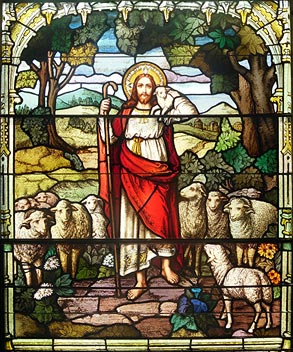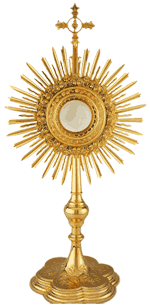 A poor widow also came and put in two small coins worth a few cents [into the treasury]. Calling his disciples to himself, he said to them, “Amen, I say to you, this poor widow put in more than all the other contributors to the treasury. For they have all contributed from their surplus wealth, but she, from her poverty, has contributed all she had, her whole livelihood.” (Mk 12:42-44)
A poor widow also came and put in two small coins worth a few cents [into the treasury]. Calling his disciples to himself, he said to them, “Amen, I say to you, this poor widow put in more than all the other contributors to the treasury. For they have all contributed from their surplus wealth, but she, from her poverty, has contributed all she had, her whole livelihood.” (Mk 12:42-44)
The description of the treasury here shows how the people supported the Temple at the time of Jesus as they had since the building of the temple 960 Before Christ (B.C.). The First Temple in Jerusalem was built by Solomon, and it stood from the time of its completion in 960 B.C. until it was destroyed by the Babylonians in 586 B.C. After the Babylonian captivity, construction began on a new temple – called the “Second Temple” – in 535 B.C. The Second Temple was eventually completed in 516 B.C. and dedicated in 515 B.C. As described in the Book of Ezra, Zerubbabel, the governor, showed a remarkable example of generosity by contributing personally 1,000 golden coins, besides other gifts. And the when the people: “arrived at the house of the Lord in Jerusalem, some of the family heads made free-will offerings for the house of God, to rebuild it in its place. According to their means they contributed to the treasury for the temple service: sixty-one thousand drachmas of gold, five thousand minas of silver, and one hundred garments for the priests.” (Ezra 2).
Certainly, a great deal of that money was used to build the Temple, but money was also accepted to pay for the offerings sacrificed in the Temple, to support the priests and judges and to provide for the poor. Not much has changed since then. We’re still doing the same thing in 2015!
But there’s a deeper context here. This Second Temple was destroyed by the Romans in 70 A.D. And that was the end of the Levitical priesthood, the end of animal sacrifices and the end of “Temple worship” as it existed at the time. Or was it? Not really. It was actually the fulfillment of prophecy in that “the veil of the sanctuary was torn in two from top to bottom.” (Mt. 27:51). No longer was worship limited to the Temple in Jerusalem. “Temple worship” continued with worship of Jesus, who said that “I will destroy this temple made with hands and within three days I will build another not made with hands.” (Mark 14:58). The “Third” Temple is the temple of the Body of Christ.
So back to the poor widow and her coins. Everyone had to make an offering in the Temple. And the poorest put in one coin. But the widow – a woman with no income or means – put in two. She put her complete trust that the one for whom the Temple was built would provide for her. She showed trust. Donating money when we’re poor shows trust. But our ultimate trust points not to the gift or even the giver. It points to our faith that Christ will provide for our needs.
We’ve got a lot of work to do to restore our beautiful Church. But the real importance of St. Stephen Church is that we enter to worship Jesus and to have Him enter the temple of our own bodies. As we say at each Mass, “Lord, I am not worthy to have you enter under my roof; only say the word and my soul will be healed” (Mt. 8:8).

(Rev. Msgr.) Christopher H. Nalty
msgr.nalty@goodshepherdparishNOLA.com




